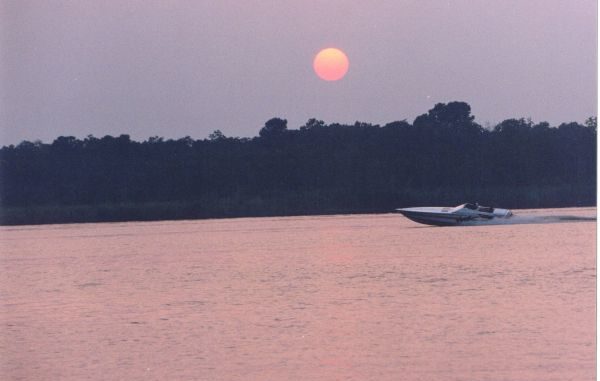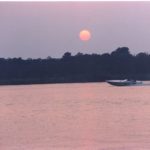
Enjoy Louisiana’s waters safely
While Louisiana has thousands of boats on the water on any given day of the year, recreational boating activity peaks during the summer months.
So do boating accidents and their related injuries and fatalities.
A couple of months ago we talked about maintenance and safety checks on boats, motors and trailers as part of the process of getting ready to launch your boat and your boating season.
In this installment, we will go over a few things every boater needs to know to make each trip a complete success and an enjoyable experience. We’ll define “complete success” as getting there and back without breakdown, accident or injury, and “enjoyable experience” as doing so without any cause for getting frightened out of our wits.
For the sake of clarity, we can separate a successful day on the water into three distinct parts: Getting there, doing whatever the chosen activity may be without incident and getting back.
Getting there includes, in part, the things we talked about previously. Equipment should be in good working order. Each person must have a properly fitting personal flotation device in good condition. All other required safety equipment should be in the boat and within reach.
Next, we need to decide where to go. That might not always be an option due to the individual situation. Those of us with camps or homes on or near the water, often confine boating exclusively to that location. If you do have options, as we have here in Central Louisiana, look for the less-utilized places. Less boat traffic means it’s quieter, safer and you don’t have to maintain a constant state of alert in a 360-degree radius to avoid a collision.
If Lake Solitude is not an option, consider getting out on the water early to beat the crowd. Mitzi and I fish frequently, and one of our favorite spots is on the open waters of a popular local lake. We get there early, ahead of the water ski/personal watercraft enthusiasts. They usually don’t show till around noon, and as soon as somebody yells “Yahoo!” we pick up the anchors and head for the landing.
No point in sitting there bouncing on the wakes of passing boats, hoping we don’t get run over.
The largest part of a day of recreation on the water is spent doing whatever it is you went out to do. So how do we engage in our chosen activity safely? It depends on what we are doing.
For the fisherman, direction of travel and speed are not crucial concerns while fishing. But two things should be on the angler’s mind. One is his location, and the other is visibility to approaching boat traffic.
One of the more common collision scenarios is a boat underway at speed colliding with another boat at anchor or drifting. One example took place several years ago in a narrow bayou in the Saline/Larto lakes complex. A crappie fisherman was drift-fishing in the bayou near a sharp bend. Another fisherman, running at high speed, came around the bend and ran over the drifting boat before the operator could react.
The fisherman in the drifting boat was killed
Clearly the operator of the speeding boat was reckless in running too fast to avoid striking a visible object in the winding and narrow bayou. But the victim put himself in harm’s way by his choice of fishing spots.
The other concern here is approaching boat traffic and whether the oncoming operator sees your boat. Here again, cause of collision is operator inattentiveness or, plainly stated, not looking where he is going.
Water skiing and towing people behind boats on water toys concerns me — particularly when the skiers or riders are small children. Naturally all eyes in the boat are on the child, including those of the operator. That’s why the law requires an observer in the boat. The operator needs to be focused on where he is going and what is in or might come into his path.
But we can’t always rely on the other guy doing what he should do, so avoid sitting in high-traffic areas and near sharp bends in narrow waterways. Sound-producing devices are, in my opinion, a must in any and every boat. If you think the operator of an oncoming boat does not see you, sound the horn. Keep sounding the horn until he veers away.
If you are on the water to ski or simply boat ride, the same cautions apply. Avoid high-traffic areas if possible, and stay alert and aware of your surroundings and other boats at all times. Remember that exposure to the sun, wind and heat takes a toll on the body and mind. So take breaks to cool off and drink water (not beer) to keep hydrated. Limit outings to a few hours, and end the trip before everyone is worn to a frazzle.
Which brings us to Part 3 — getting in safely.
My No. 1 and only recommendation here is get in before sundown. Even though your boat might be equipped with running lights, don’t wait until they are needed before going in. Everything changes when darkness arrives, and if you don’t have to be on the water after dark then don’t. Yes, I know you have running lights, you turn them on at sunset as you are supposed to and they even work. You also slow down and drive very carefully, using a spotlight to find your way.
But what about other boaters?
Even when running with anchor lights blazing and in compliance with the regulations, that doesn’t guarantee complete safety. With darkness, we lose depth perception and to a large degree the ability to judge distance is compromised. It’s just plain hard to judge how near or far away a light might be. Anchor lights can also be easily confused with lights on docks or shore in populated or developed areas.
One of the worst boating accidents with multiple fatalities I ever investigated was a nighttime collision on Red River involving a recreational boat colliding with a moored river barge.
After travelling upriver by boat, the party had originally planned to camp overnight on the riverbank. But oppressive heat and mosquitoes changed their mind.
The exhausted and possibly impaired boat operator was awakened and persuaded to return to the launch. He took off, running fast downriver with three passengers on board.
The rest is speculation based on the findings of the investigation and reconstruction, but we think when he rounded a bend in the river, the properly lit and legally moored barge came into view. We also think he confused the anchor light on the stern of the barge with a night light at the landing farther downriver.
He was very familiar with this stretch of river, and had run it at night in the past. But this time he got the anchor light on the barge confused with the light at the boat landing. He lined up on the anchor light, instead of the night light — and drove his boat at high speed into the side of the barge.
He along with one of the passengers died in the crash. The other two severely injured passengers survived only because they were pulled from the water within moments by another boater following at a more-prudent and cautious speed.
It took us several days to recover the boat and the bodies of the deceased.
Properly equip the boat, plan trips carefully, learn as much as possible about boating, and enjoy the sun, fun and adventure boating in Louisiana has to offer.




